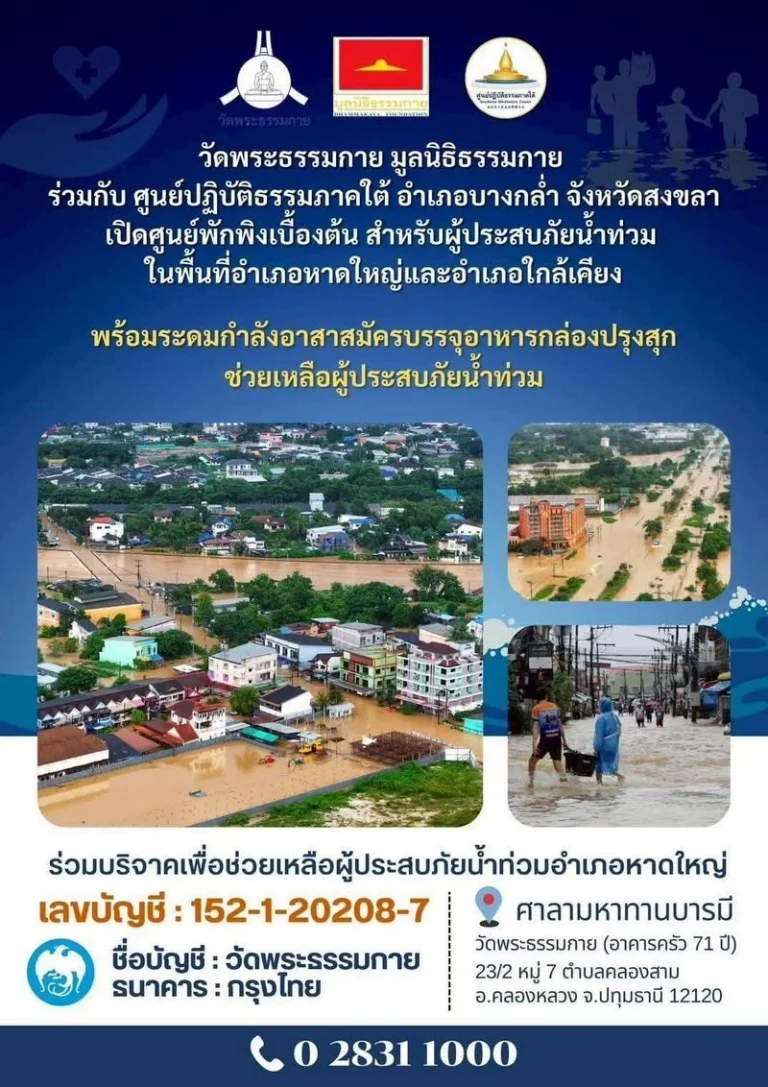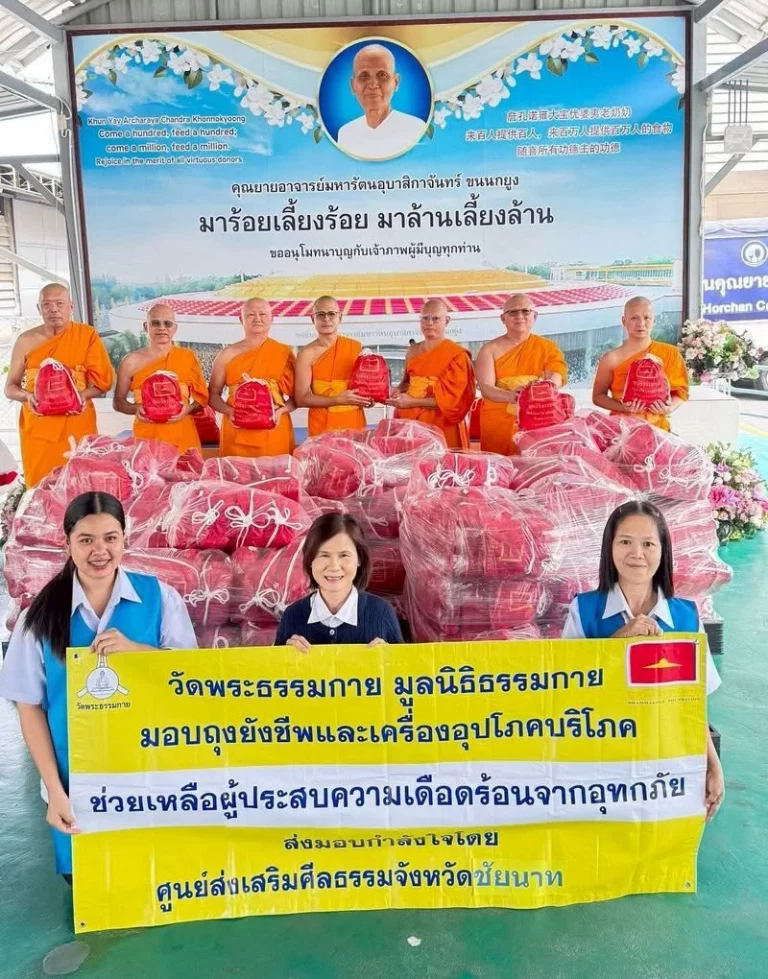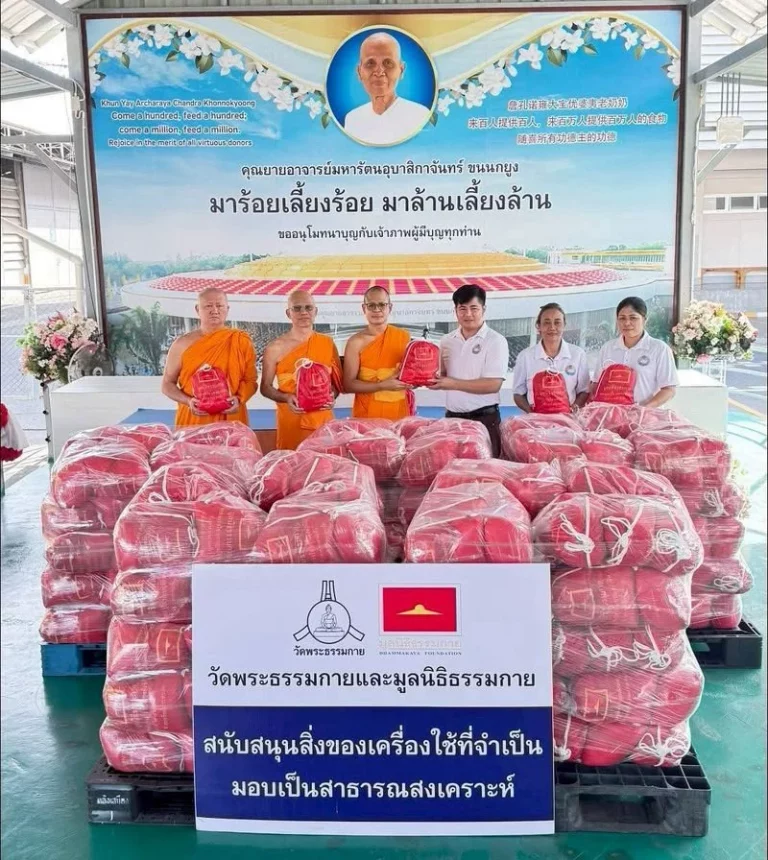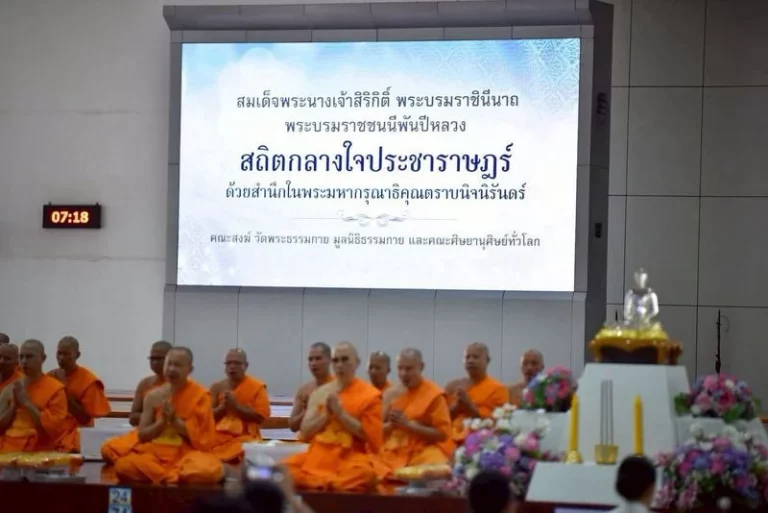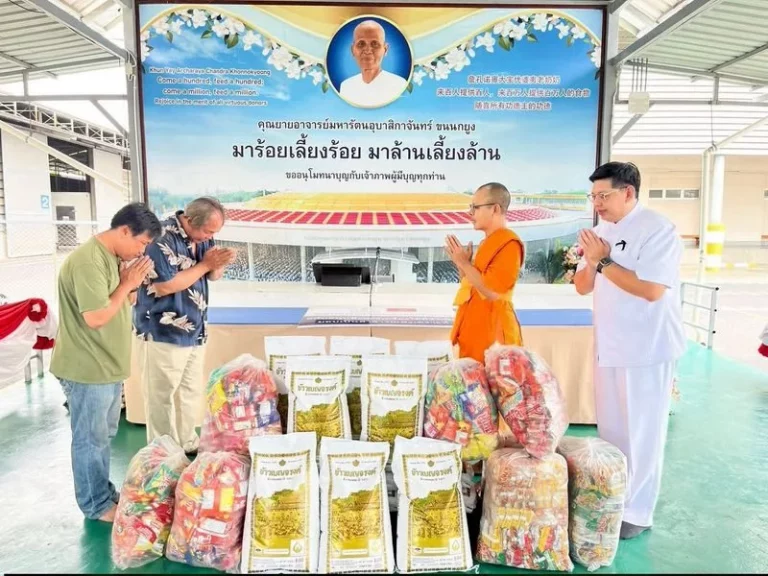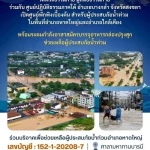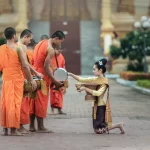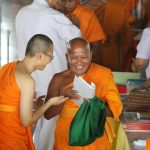Biography
The Master Nun Chand Khonnokyoong
“To be born as a human being is already fortunate. You all should learn how to make merit and be generous. After death, we take nothing with us but our merit and unwholesome deeds. If you make merit, you carry the merit with you. If you make demerit, you carry the demerit with you. It does not simply disappear after death. We continue to carry our merit and demerit.” Khun Yai’s teaching
Master Nun Chand Khonnokyoong (1909-2000).
Leading disciple of the Great Master Phramongkolthepmuni (Sodh Candasaro) and founder of
Wat Phra Dhammakaya
“Khun Yai” Chand Khonnokyoong was born on January 20, 1909, in Nakorn Chaisri, a rural municipality of Thailand. She was the fifth of nine children in the family. Her father, Ploy, and mother, Pan, were rice farmers.
The word “Khun Yai” means “grandmother” in Thai. It is a respectful way to call a woman of advancing age. Khun Yai’s given name was Chand, which means “moon”. Her last name was Khonnokyoong, which means“peacock-feather”. The farmer’s life had trained Khun Yai to be industrious. She would get up before sunrise to tend to the rice field with her water buffalo and would return home at sunset. In those times, Thai families seldom send their daughters to school. Because of this, Khun Yai never learned how to read or write.
Khun Yai’s father was a good family man but he was addicted to alcohol. He was gentle when sober, but unpleasant when drunk. One day, he became so drunk that he fell asleep under the house while the family slept inside (a village house is usually built on stilts to protect from wild animals and flooding). He was mumbling and snoring so loudly that it bothered the family. In disgust, her mother called him a “sparrow” (a Thai expression for a worthless person) that leached off of her. This remark wounded his pride. He angrily asked all the children if they heard their mother insult him. The children stayed quiet. Innocently, Khun Yai said that she did not think her mother had insulted him. This infuriated her father, thinking she was taking her mother’s side. In anger, he cursed Khun Yai to deafness for 500 lifetimes. Many Thai folks believe that the parents’ words are sacred and potent. Khun Yai worried that her father’s curse would come true for her. She wished to ask for her father’s forgiveness so the curse could be lifted. Unfortunately, she never had the opportunity to do so until he died.
On the day her father passed away, Khun Yai was out working in the rice field. When she came home after a long day, she saw everybody crying for her father. It is a Thai tradition to ask a dying person for forgiveness for any wrongs done to the person. Everybody had already asked for his forgiveness, except for Chand.
His death profoundly affected Khun Yai’s life. Most Thai people believe in rebirth. She worried that she would be reborn deaf as a result of her father’s curse. Now that her father had passed away, the only place to find him was in the afterlife realm.
When Khun Yai was 18 years old, she heard about the supernormal meditative powers of the Great Abbot of Wat Paknam Bhasicharoen (Phramongkolthepmuni, 1885-1959) who taught an advanced form of meditation known as the Dhammakaya Knowledge. Through this Knowledge, an adept meditator could use his inner transcendental body to traverse to the afterlife realms. Some of the Great Abbot’s disciples were known to have this ability. Khun Yai wished that one day she would have the opportunity to meet the Great Abbot and learn this Knowledge from him. Khun Yai left home in 1935 when she was 26 years old to look for the Great Abbot at Wat Paknam Bhasicharoen in Thonburi, a neighboring city of Bangkok. She learned that a woman by the name of Madam Liab was a regular benefactor of Wat Paknam. She applied for a job with Madam Liab to become her domestic help. She did this to gain access to the inner circle of Wat Paknam and the Great Abbot so that one day she could become a disciple there. Madam Liab agreed to hire Khun Yai.
As time went by, Khun Yai’s hardworking nature and truthfulness gained her the complete trust and confidence of Madam Liab. During this same time a meditation master from Wat Paknam by the name of Khun Yai Tongsuk Samdaengpan, a leading disciple of the Great Abbot, was teaching meditation at Madam Liab’s home. At Khun Yai’s request, Madam Liab agreed to let her join the meditation class. Khun Yai practiced meditation with Khun Yai Tongsuk Samdaengpan, for two years. She eventually attained the Dhammakaya, a state of absorption in meditation
where the mind becomes one and the same with the inner Body of Enlightenment, having penetrative insight into the reality of life and the world. This is a state where mental consciousness is at its highest.
Having achieved this high level of meditative attainment, Khun Yai asked Khun Yai Tongsuk to show her how to traverse to the afterlife realms so that she could find her father. With Khun Yai Tongsuk’s help, Khun Yai finally located her deceased father who, due to his bad drinking habits, had fallen into one of the hell realms. Through her Dhammakaya Body, Khun Yai was able to communicate with her father and asked for his forgiveness, which he granted. And through the power of the Dhammakaya, Khun Yai helped him to recall the merits from his good deeds in earlier lifetimes so these merits could relieve him from this retribution. Her father’s retribution was indeed neutralized by the power of his merit and he was freed from the hell realm. Upon attaining the Dhammakaya, Khun Yai knew that Dhamma was to become her life destiny. She decided to renounce the worldly life to become a nun.
Khun Yai finally met the Great Abbot in 1938. She asked to become his disciple and to be ordained as a nun. The Great Abbot happily obliged. While at Wat Paknam, Khun Yai was admitted to join the super-advanced meditation workshop where only the most accomplished meditators were allowed. Khun Yai devoted herself entirely to meditation without concerns for anything else even though sometimes she was mistreated by peers who looked down upon her. She meditated twelve hours each day, six uninterrupted hours in the morning and six uninterrupted hours in the evening. Her meditation skills became so profound that she soon became one of the Great Abbot’s most outstanding disciples. The Great Abbot called her “Second to None”.
In 1954, the Great Abbot called a meeting among his students from both inside and outside the temple to speak of his passing which was to take place in five years. He told his students to spread the Dhammakaya Knowledge to the world. Five years later, his prophecy came true. The Great Abbot passed away on February 3, 1959. After the Great Abbot’s passing, Khun Yai continued to teach meditation at her residence at Wat Paknam. People referred to her as “Teacher Chand”. She was called “Khun Yai” (grandmother) by her younger students, and everybody called her “Khun Yai” after that. The number of students grew steadily until it exceeded the capacity of her residency. Among these students were two promising young men, Chaiyaboon Suddhipol and Padej Pongsawat, who later became two great Buddhist monks who led the Dhammakaya Temple to its pinnacle of success as we know today. In 1967, a larger wooden building was constructed inside the Wat Paknam compound to serve as a meditation center. It was named the “Dhammaprasit House”.
Young Chaiyaboon Suddhipol and Padej Pongsawat played key roles in all of Khun Yai’s projects. Khun Yai was 54 years old when she met Chaiyaboon Suddhipol in October 1963 while he was a freshman at Kasetsart University. Chaiyaboon was 19 at the time. Padej joined Khun Yai soon after through the introduction of Chaiyaboon. Both of them studied meditation with Khun Yai and were the supporters and driving force behind many of Khun Yai’s success. Chaiyaboon achieved a high level of success in the Dhammakaya meditation practice, and Khun Yai assigned him to teach meditation to others. Chaiyaboon came to realize that his real purpose in life was to become a Buddhist monk. Khun Yai was pleased to hear of his intention but advised him to finish college before entering monkhood.
Chaiyaboon graduated from Kasetsart University in April 1969, with a Bachelor’s degree in economics, and was ordained at Wat Paknam on August 27th of the same year. His monastic name was Dhammajayo Bhikkhu (currently Phrathepyanmahamuni, Abbot of the Dhammakaya Temple), also known as Luang Por Dhammajayo.
Luang Por Dhammajayo went on to become a legendary monk and spiritual leader who successfully propagates the Dhammakaya Knowledge to the world. Padej, another key disciple of Khun Yai, was also a graduate of Kasetsart University. Padej had a compelling personality and natural leadership qualities. Padej, too, had found Dhamma to be his shining light and decided to become a monk for life. He was ordained on December 19, 1970, at Wat Paknam. His monastic name was Dattajeevo Bhikkhu (currently Phrabhavanaviriyakhun, Vice Abbot of the Dhammakaya Temple), also known as Luang Por Dhattajeevo. Today, Luang Por Dattajeevo is a world-renown Buddhist scholar who has written and published scores of books on Buddhism.
After the ordination of Luang Por Dhammajayo, Khun Yai felt the time was right for them to build a Buddhist temple where true monks could be developed and the Dhammakaya Knowledge could be propagated to benefit mankind. This was a grand vision indeed, but could it be achieved?
To fulfill this vision, a great deal of financial resources would be needed. Unfortunately, all that Khun Yai had was her own savings of a mere 3,200 Baht (US$160 in 1970). But Khun Yai was a perpetual optimist who was driven by merit and merit power. She strongly believed that the virtue of good deeds performed by her and her team members would attract sufficient “celestial treasures” to make this mission possible. Khun Yai and Dhammajayo Bhikkhu envisioned that their future temple would be built on a sizeable piece of land not too far from Bangkok, with a river or creek flowing through it. The team set out to look for such a land. They found a track of land in Pathumtani, ten miles from the Bangkok International Airport. This land was owned by Lady Prayad Prattayaponsa-Visudhadhipbodi, an aristocratic lady. The team was not certain that Lady Prayad would be willing to sell part of the land she owned, but proceeded to arrange for a meeting with her. The day that Khun Yai’s team met with Lady Prayad also happened to coincide with Lady Prayad’s birthday. It was a lucky day for Khun Yai and the team. Not only was Lady Prayad willing to part with the land, but she was in fact willing to donate the entire 78.4 acres of her land to the future temple. This was nothing less than a miracle. Needless to say, everyone was overjoyed.
The Dhammakaya Temple was formally established on Magha Puja Day, February 20, 1970. It was originally called Buddhajak Meditation Center. The Main Chapel was completed in 1982. The property was later expanded to 1,000 acres in 1985.
The Great Dhammakaya Cetiya, the world’s largest Buddhist monument where 300,000 Buddha images are enshrined on the exterior dome, was completed in the year 2000. The Grand Opening Ceremony of the Cetiya took place on Saturday, April 22, 2000. Khun Yai was 91 years old when the great Cetiya was completed. She lived to see that big day. The Great Dhammakaya Cetiya is indeed a gift to mankind. The compounds surrounding the Ceitya are now the gathering grounds for Buddhists around the world. Over one million Buddhists gather at the Cetiya during important Buddhist events.
The Dhammakaya’s mission statement is “World Peace through Inner Peace”. Its goal is to “change the world, one person at a time”. The Dhammakaya Temple, Khun Yai’s brainchild, is now the center of Buddhism for all Buddhists around the world.
Khun Yai passed away on the morning of Sunday, September 10, 2000. At her Cremation Ceremony in 2002, 100,000 Buddhist monks from 30,000 temples all over Thailand, many senior monks from twenty different countries, and hundreds of thousands of others from around the world came to pay their final respect to Khun Yai. This is the biggest gathering of Buddhists in history.
A tiny little farmer girl, completely illiterate, took a journey on a spiritual quest, found a Great Master, learned the great Knowledge from the Master, went on to build a great temple, produced many true monks and virtuous people, and brought goodness to mankind.








